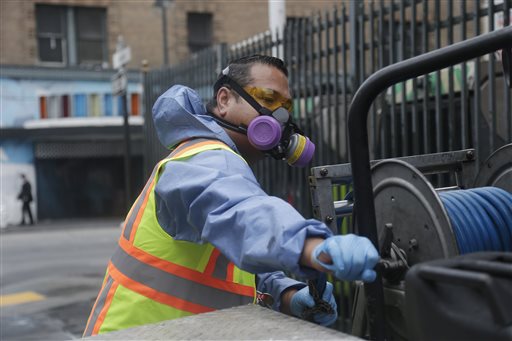SACRAMENTO, Calif. (AP) — California water regulators voted Tuesday to approve fines up to $500 a day for residents who waste water on lawns, landscaping and car washing, as a report showed that consumption throughout the state has actually risen amid the worst drought in nearly four decades.
The action by the State Water Resources Control Board came after its own survey showed that conservation measures to date have failed to achieve the 20 percent reduction in water use sought by Gov. Jerry Brown.
Survey results released before the 4-0 vote showed water consumption throughout California had actually jumped by 1 percent this past May compared with the same month in previous years.
The fines will apply only to wasteful outdoor watering, including watering landscaping to the point that runoff flows onto sidewalks, washing a vehicle without a nozzle on the hose, or hosing down sidewalks and driveways.
“Our goal here is to light a fire under those who aren’t yet taking the drought seriously,” water board Chairwoman Felicia Marcus said in an interview after the vote.
She called the vote historic, not only because the steps are unprecedented in California but because the board is trying to spread the burden of the drought beyond farmers and agencies that are trying to protect wildlife.
She said city and suburban residents are not fully aware of the seriousness of the three-year drought — the worst in California since the mid-1970s.
“We’re all in this together,” Marcus said. “This is our attempt to say … this is the least that urban Californians can do.”
The board estimates the restrictions, which take effect in early August, could save enough water statewide to supply more than 3.5 million people for a year.
Cities and water districts were given wide latitude on how the fines will be implemented. The full $500-a-day fine, considered an infraction, could be reserved for repeat violators, for example. Others might receive warnings or smaller fines based on a sliding scale.
The rules include exemptions for public health and safety, such as allowing cities to power-wash alleyways to get rid of human waste left by homeless people, to scrub away graffiti, and to remove oil and grease from parking structure floors.
If fines fail to promote conservation, Marcus said the board would consider other steps such as requiring water districts to stop leaks in their pipes, which account for an estimated 10 percent of water use, stricter landscape restrictions and encouraging water agencies to boost rates for consumers who use more than their share of water.
Even with the leeway granted to local governments and water districts, some managers were unhappy with the board’s action.
Mark Madison, general manager of the Elk Grove Water District south of Sacramento, said the steps will unnecessarily punish customers who already have reduced consumption. Residents in his district have cut water use by more than 18 percent since last year.
“What you’re asking me to do right now is to thank them with a sledgehammer,” he told the board.
The increased usage noted in the report is attributable to two regions of the state: Southern California coastal communities and the far northeastern slice of the state. It was not immediately clear why consumption had increased in those areas.
No region of California met Brown’s request for a 20 percent reduction, but some came closer than others. Communities that draw from the Sacramento River reduced consumption the most, by 13 percent, while those along the North Coast reduced consumption by 12 percent.
San Francisco Bay Area and Southern California cities that draw from the Colorado River decreased water use by 5 percent.
Cities and suburbs use about 20 percent of the state’s water, with about half going outdoors. Agriculture is by far the greatest water user, accounting for 75 percent of consumption in the state.
California farmers are just as guilty of using too much water as their urban neighbors, according to a separate report released Tuesday. The study by the University of California, Davis, found that some farmers could see their wells run dry next year unless the state sees a wet winter.

COMMENTS
Please let us know if you're having issues with commenting.